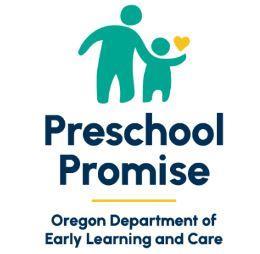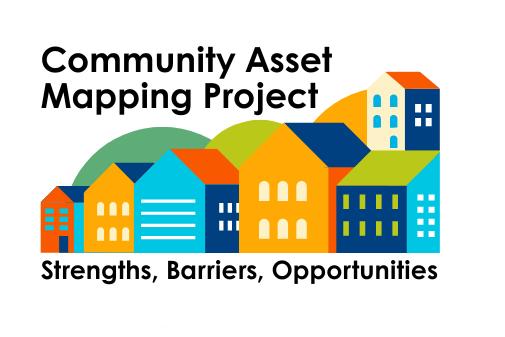








“Adverse conditions, such as inadequate nutrition and housing, poor maternal health, or a lack of positive early experiences and nurturing relationships have a lasting detrimental effect on the developing brain, even if a child’s circumstances are improved later in childhood.”
—Raise Up Oregon
The Regional Data Book aims to monitor the well-being of children and provide insights into their status across four key areas: early child care and education, K-12 education, family and economic well-being, and maternal and child health.
This information will assist the Governing Board of the Early Learning Hub of Linn, Benton, and Lincoln Counties in making strategic decisions that enhance family stability, improve kindergarten readiness, and ensure that services are coordinated in a family-centered, equitable, and culturally and linguistically appropriate manner for our region.
Oregon Revised Statute OAR 414-900010 states that children who are at risk experience chronic and persistent opportunity gaps due to family circumstances beyond their control, such as poverty, drug abuse in the home, unsafe housing, racism or ethnic discrimination, unmet medical needs, parental mental illness, child abuse and/or neglect, involvement with Department of Human Services (DHS), and families involved in juvenile and adult corrections.




When children live in poverty, there is a high probability that they will not have stable housing, food security, or health insurance. There is also a higher chance that they will drop out of school and have lower overall earnings in life.
by Audrey Mechling,
“A Portrait of Poverty in Oregon,” Oregon Center for Public Policy, 2020.
➢ Benton County has the highest median family income at $113,224, which is higher than the statewide average of $98,832. Linn County follows with a median income of $87,508, while Lincoln County has the lowest at $76,426.
➢ Lincoln County has the highest percentage of families with children living below the federal poverty level at 20.4%, followed by Benton County at 14.4% and Linn County at 13.1%. All of these figures exceed the statewide level of 11.5%.
Data Source: 2023 ACS 5-Year Estimates.
Data Source: 2023 ACS 5-Year Estimates.
Families with Young Children Living in Poverty by Type of Families
Data Source: 2023 ACS 5-Year Estimates.
➢ The Hispanic or Latino population has increased in three counties over the past ten years. Lincoln County has the highest percentage of Latino children at 23.0%, followed by Linn County at 16.9% and Benton County at 16.3%.
➢ Spanish is the most commonly spoken language after English in three counties and statewide.
➢ Linn County has the highest number of people and children living in rural areas, followed by Lincoln County among the three counties.
➢ Lincoln County has the highest percentage of people and children living in rural areas, followed by Linn County among the three counties.
People Living in Rural and Urban Areas
Under 5 years
Under 18 years
Total population
Under 5 years
Under 18 years
Total population
Under 5 years
Under 18 years
Total population
Under 5 years
Under 18 years
Total
Data Source: 2023 ACS 5-Year Estimates

➢ Home values have increased over the past decade across three counties and statewide As of January 2025, Benton County has the highest average home value, at approximately $535,000, which exceeds the statewide average of about $489,000. Following Benton County, Lincoln County has an average home value of $461,000, and Linn County has the lowest at $404,000.
➢ Low-income households are more likely to be costburdened by housing costs than households with higher incomes
Percentages of Cost-Burdened Housing by Household Income
Data Source: 2023 ACS 5-Year Estimates.
➢ As of January 2025, Lincoln County had the highest all-home rent at $2,049 per month, closely followed by Benton County at $2,003 per month. Linn County had the lowest all-home rent at $1,660 per month.
Households Receiving Food Stamps/Supplemental Nutrition Assistance Program (SNAP)
Data Source: 2023 ACS 5-Year Estimates.
➢ Children living in food-insecure households have limited or uncertain availability of nutritionally adequate food.
➢ Linn County has the highest percentage of young children (under 6 years old) without health insurance at 3.8%, followed closely by Lincoln County at 3.7% and Benton County at 2.9%. All three counties exceed the statewide level of 2.5%.
➢ Our region is considered a “child care desert,” where access to regulated child care is limited for all children, with the greatest need for child care slots among children aged 0 to 2 years.
➢ Only 6 out of every 100 children aged 0-2 have access to regulated slots in Lincoln County, followed by 7 per 100 in Linn County and 21 per 100 in Benton County
➢ Only 17 out of every 100 children aged 3-5 have access to regulated slots in Linn County, followed by 30 per 100 in Lincoln County and 38 per 100 in Benton County.
➢ In 2023, Lincoln County had the highest preschool enrollment rate at 49.2%, followed by Benton County at 46.2%. Both rates are higher than the statewide level of 41.5%. Conversely, Linn County has the lowest rate at 27.7%.
➢ In 2023, Lincoln County had the highest public preschool enrollment rate of all enrollments at 93.6%. This is followed by Linn County, which has an enrollment rate of 51.1%. Both counties exceed the statewide average of 47.7%. In contrast, Benton County has the lowest public preschool enrollment rate, at just 37%.
Percentages of Monthly Income Needed to Cover The Toddler Care Cost in Center Care by Income Type
➢ The median monthly cost of toddler care in child care centers in Benton, Lincoln, and Linn counties accounts for 24.9%, 20.5%, and 18.3% of the median household incomes, respectively, all of which exceed the 7% considered affordable

Data Source: 2023 ACS 5-Year Estimates. Oregon Child Care Market Price Study, 2024, Oregon State University
Percentages of
Data Source: 2023 ACS 5-Year Estimates. Oregon Child Care Market Price Study, 2024, Oregon State University
➢ Compared to 2022, the median prices for toddler care have increased in 2024 across all types of care (small home-based care, large home-based care, and center care) in three counties and statewide. The only exception is large home-based care in Benton County, where the price has decreased from $1,448 to $1,100.
➢ Care centers are the most expensive option in three counties and statewide, followed by large homebased care. Small home-based care is the most affordable
➢ Over the past decade, the median prices for toddler care have risen significantly in three counties and across the state.
➢ The cost of toddler care can easily exceed 30% of a parent's monthly income when working a minimumwage job, with center-based care potentially accounting for over 50% in our region and statewide.
“… lack of affordability often prevents families from accessing quality care and education.” Oregon’s Child Care Deserts 2022, Oregon State University
Data Source: Student Enrollment Reports (Fall Membership Report 2023-24), ODE
Total K-12 Student Enrollment by County
Linn Benton Lincoln EL Hub Region
Data Source: Student Enrollment Reports, ODE
➢ K-12 Student enrollments have decreased over the past five years in three counties.
Data Source: McKinney-Vento Act: Students Navigating Houselessness Education Program.
➢ Lincoln County School District has the highest percentage of students experiencing homelessness at approximately 15%, followed by Central Linn School District at 10%. Both rates are significantly higher than the statewide level of 4.1%.
Data Source: At-A-Glance School and District Profiles, 2023-24, Oregon Department of Education.
Notes: Students experiencing poverty are defined as those facing economic disadvantage, which goes beyond simply falling below a specific income level. This definition typically follows the USDA income eligibility guidelines for free and reduced-price lunch programs.
Data Source: Cohort Graduation Report, Oregon Department of Education.
Resident Births by the Race/Ethnicity of Mother in EL Hub Region, 2017-2023
Data Source: Assessment Report, 2023-24, Oregon Department of Education.
➢ In the 2022-23 school year, Linn County served the highest number of infants, toddlers, and preschool children through Early Intervention/Early Childhood Special Education (EI/ECSE) services, with a total of 352 children. Benton County followed with 116 children, while Lincoln County served 100 children.

Data Source: Oregon Vital Statistics Report, Oregon Center for Health Statistics.
Data Source: Oregon Vital Statistics Report, 2010-2023, Oregon Center for Health Statistics; ACS 5-Year Estimates.
Notes: The General Fertility Rate is a ratio that measures the total number of resident live births for
15-44; The Total Fertility Rate is a ratio that estimates the average number of children a woman is expected to have over her lifetime, given current birth rates by age. A Total Fertility Rate of approximately 2.10 is required to maintain a stable population.
➢ The number of resident births has declined across three counties, and Hispanic mothers had the second highest number of new births after white mothers, and this number has seen an increase over the past few years
➢ In 2023, Linn and Lincoln Counties recorded the highest number of new births to mothers aged 25 to 29. Conversely, Benton County had the most significant number of new births among mothers aged 30 to 34
➢ Lincoln County has the highest rate of new births to unmarried mothers at 54.4%, exceeding the statewide rate of 37.6%. Linn County follows at 37%, and Benton County has 27%.
➢ Over the past decade, both the general fertility rate and the total fertility rate have declined
➢ In 2023, Benton County had the highest immunization rate for two-year-old children, reaching 69.7%. Linn County follows closely with a rate of 68.9%. Both counties exceed the statewide average of 68.3%. In contrast, Lincoln County has the lowest immunization rate among the three counties, standing at 66.5%.
Data Source: Child Welfare Data Book, 2023, Oregon, Oregon Department of Human Services.
➢ In 2023, Lincoln County had the highest rate of victimization per 1,000 children at 22.2, followed by Linn County at 17.3, both of which were higher than the statewide average of 13.0. Benton County had the lowest rate at 10.8.
➢ In 2023, Lincoln County recorded the highest rate of children receiving services at home from Child Welfare Services, at 2.7 per 1,000 children. Linn County ranked second, with a rate of 1.7, both exceeding the statewide average of 1.0. In contrast, Benton County had the lowest rate, at 0.5.
➢ In 2023, Lincoln County reported the highest rate of children in foster care, with 8.8 children per 1,000. This was followed by Linn County, which had a rate of 6.7. Both of these rates are higher than the statewide average of 5.4. In contrast, Benton County had the lowest rate at 4.8 children per 1,000.
➢ In 2024, Linn County had the highest rate of juvenile justice referrals, with 17.8 referrals per 1,000 children. Lincoln County follows closely, with a rate of 17.4, both of which exceed the statewide average of 13.6. In contrast, Benton County has the lowest rate, at 12.1 referrals per 1,000 children


















